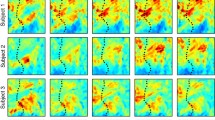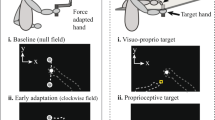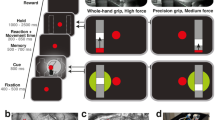Abstract
In three monkeys trained to finely grade grip force in a visuomotor step-tracking task, the effect of the context on neuronal force correlates was quantitatively assessed. Three trial types, which differed in force range, number, and direction of the force steps, were presented pseudo-randomly and cued with the color of the cursor serving as feedback of the exerted force. Quantitative analyses were made on 85 neurons with similar discharge patterns in the three trial types and significant linear positive (54 cells) or negative (31 cells) correlation coefficients between firing rate and force. An analysis of covariance (ANCOVA) showed that the population slopes for 2-step were steeper than for 3-step trials. Another ANCOVA at the population level, computed on the differences in firing rate and force between force steps, persistently disclosed a significant effect of trial type. For the first two force steps, the differences in firing rate were significantly larger in the 2-step than in the 3-step increase trials. Further analyses revealed that neither the force range nor the number of steps was a unique factor. A small group of neurons was tested in an additional trial series with a uniform cue for all three trials, leading to either a loss of context-dependency or to unexpected changes in firing rate. This demonstrates that the cue color was an important instruction for task performance and neuronal activity. The most important findings are that the context-dependent changes were occurring ”on-line”, and that neurons displaying context-dependency were found in all three lateral premotor cortex hand regions and in the primary motor cortex. Finger muscle activity did not show any context dependency. The context-dependent effect leads to a normalization of the cortical activity. The advantage of normalization is discussed and mechanisms for the gain regulation are proposed.
Similar content being viewed by others
Author information
Authors and Affiliations
Additional information
Received: 10 November 1998 / Accepted: 13 March 1999
Rights and permissions
About this article
Cite this article
Hepp-Reymond, MC., Kirkpatrick-Tanner, M., Gabernet, L. et al. Context-dependent force coding in motor and premotor cortical areas. Exp Brain Res 128, 123–133 (1999). https://doi.org/10.1007/s002210050827
Issue Date:
DOI: https://doi.org/10.1007/s002210050827




